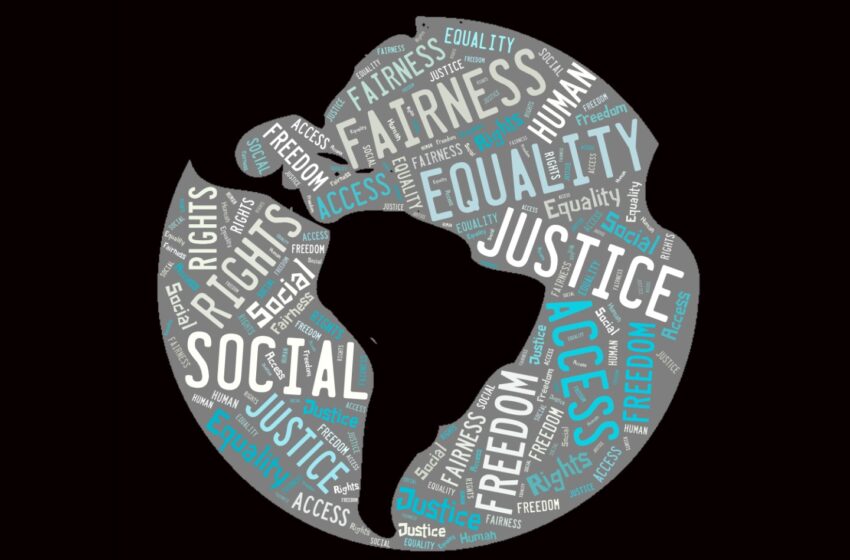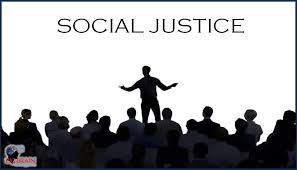UP Transport Department WhatsApp Chatbot : Get Driving License & Vehicle Details Instantly
Social Justice: Empower, Advocate, Unite 10 Powerful Ways to Champion

Social Justice: Activism, Advocacy, and Allyship Social justice is the pursuit of equity, fairness, and the protection of human rights for all individuals, regardless of race, gender, socioeconomic status, or other identity markers. In a world marked by systemic inequalities, activism, advocacy, and allyship play crucial roles in dismantling oppressive structures and fostering a more inclusive society. This article explores these three interwoven pillars of social justice, their significance, and how individuals can contribute to creating a fairer world.

Understanding Social Justice
Social justice is founded on the principles of human rights, equality, and dignity. It seeks to address disparities in wealth, access to resources, and representation. While legislative reforms can provide structural changes, real progress is often driven by grassroots movements and collective efforts at various levels of society.
Key Principles of Social Justice:
- Equity: Ensuring that resources and opportunities are distributed fairly based on individual needs.
- Access: Breaking down barriers to education, healthcare, and employment.
- Participation: Encouraging the involvement of marginalized groups in decision-making processes.
- Human Rights: Upholding fundamental rights such as freedom, safety, and dignity for all individuals.

Activism: Driving Change Through Action
Activism is the process of taking direct action to effect social, political, or economic change. It can manifest in various forms, from peaceful protests and social media campaigns to lobbying for policy reforms. Activists play a crucial role in raising awareness, mobilizing communities, and holding institutions accountable.
Forms of Activism:
- Grassroots Movements: Community-led initiatives that address local issues, such as affordable housing or environmental justice.
- Digital Activism: Online campaigns that amplify marginalized voices and advocate for policy changes.
- Protests and Demonstrations: Public displays of dissent that draw attention to injustices and push for systemic reforms.
- Legislative Advocacy: Working with policymakers to introduce or amend laws that promote social justice.

Notable Examples of Activism:
- The Civil Rights Movement (1950s-1960s) in the United States, which fought against racial segregation and discrimination.
- The #MeToo Movement, which shed light on sexual harassment and gender-based violence.
- Climate strikes led by youth activists like Greta Thunberg, demanding action against environmental degradation.

Advocacy: Amplifying Voices and Influencing Policy
Advocacy involves efforts to influence public opinion, policies, and laws in favor of marginalized communities. Advocates work within systems to create sustainable changes through education, legal reforms, and institutional accountability.
Types of Advocacy:
- Policy Advocacy: Engaging with lawmakers to enact or modify policies that promote equity.
- Legal Advocacy: Challenging discriminatory laws and defending human rights in courts.
- Community Advocacy: Empowering local communities to voice their concerns and influence decision-making.
- Media Advocacy: Utilizing journalism and storytelling to highlight social injustices.

Steps to Effective Advocacy:
- Educate Yourself and Others: Understanding the issues and raising awareness among peers.
- Engage with Decision-Makers: Writing petitions, attending town hall meetings, and contacting representatives.
- Build Coalitions: Collaborating with organizations and individuals who share common goals.
- Measure Impact: Assessing the effectiveness of advocacy efforts and adjusting strategies accordingly.

Allyship: Supporting and Uplifting Marginalized Communities
Allyship is the practice of using one’s privilege to support marginalized individuals and groups in their fight for justice. Unlike performative allyship, which is superficial and self-serving, genuine allyship requires ongoing education, self-reflection, and action.
How to Be an Effective Ally:
- Listen and Learn: Understand the experiences of marginalized communities without centering oneself.
- Acknowledge Privilege: Recognizing one’s advantages and using them to support others.
- Take Actions: Amplify marginalized voices, challenge discriminatory behaviors, and support equitable policies.
- Accept Criticism: Being open to feedback and continuously improving one’s allyship practices.
- Commit to Long-Term Support: Engaging in consistent advocacy rather than treating allyship as a trend.
Examples of Allyship in Action:
- White allies supporting Black Lives Matter protests by using their platforms to amplify Black voices.
- Men advocating for gender equality in workplaces by challenging discriminatory hiring practices.
- Corporations taking tangible steps toward diversity, equity, and inclusion beyond performative statements.

Challenges and the Path Forward
Despite the progress made in social justice movements, challenges persist. Structural resistance, misinformation, and activist burnout are common hurdles. To sustain momentum, individuals and organizations must prioritize mental health, foster inclusive dialogues, and adopt adaptive strategies.
Ways to Sustain Social Justice Efforts:
- Self-Care: Activists and advocates should practice self-care to prevent burnout.
- Intersectional Approach: Addressing the interconnected nature of various social justice issues.
- Policy Reforms: Ensuring long-term impact by advocating for systemic changes.
- Continued Education: Staying informed about emerging social justice issues and evolving best practices.
Conclusion
Social justice is an ongoing struggle that requires dedication, persistence, and collective action. Activism, advocacy, and allyship are crucial components in the fight against systemic inequality and oppression. While activism fuels immediate change through direct action, advocacy works within existing systems to drive long-term reforms. Meanwhile, allyship ensures that marginalized voices are heard and supported in meaningful ways.
Achieving true social justice is not an individual effort but a communal responsibility. It necessitates active engagement from all sectors of society, including individuals, communities, institutions, and governments. By continuously educating ourselves, challenging unjust systems, and standing in solidarity with marginalized groups, we can work toward a more equitable and inclusive world.
Ultimately, the pursuit of social justice is a journey rather than a destination. It requires ongoing commitment and an unwavering belief in the possibility of a better, fairer future for all. The collective power of activism, advocacy, and allyship can create lasting change, shaping a world where every individual, regardless of background, enjoys dignity, respect, and equal opportunities.
Social justice is a fundamental principle that seeks to ensure fairness, equality, and equity for all individuals, regardless of their background, identity, or social status. Activism, advocacy, and allyship are three essential pillars in the pursuit of social justice, each playing a distinct yet interconnected role in challenging injustice and fostering systemic change.
Activism is the driving force behind social movements, often characterized by direct action, protests, and grassroots organizing. Activists bring visibility to social issues, demand accountability, and push for policy changes that dismantle oppressive systems. Their courage and persistence challenge the status quo, ensuring that marginalized voices are heard and societal inequities are addressed.
Advocacy complements activism by engaging with institutions, lawmakers, and communities to influence policy and systemic reforms. Advocates work within legal and organizational frameworks to propose solutions, draft policies, and implement programs that promote social justice. Their work helps translate activist demands into actionable changes that have lasting impacts on society.

Allyship is a crucial component that fosters solidarity among individuals who may not experience oppression firsthand but commit to supporting marginalized communities. True allyship requires continuous education, active listening, and leveraging privilege to amplify the voices of the oppressed. Allies play a vital role in dismantling prejudice within their own circles and advocating for inclusivity and equity.
Together, activism, advocacy, and allyship form a powerful triad that drives social justice forward. While activism sparks the conversation and demands change, advocacy institutionalizes it, and allyship broadens the movement by engaging those in positions of power and influence. Achieving true social justice requires a collective effort where individuals and communities work in unison to challenge discrimination, promote human rights, and create a more just and equitable world for all.
Ultimately, the fight for social justice is ongoing and requires unwavering commitment, resilience, and collaboration. Every act of activism, advocacy, and allyship contributes to a larger movement that seeks to eradicate inequality and build a future where justice and dignity are not privileges, but universal rights.
ALSO READ THIS: “2025 Powerful Moments from B Praak’s Inspiring Visit to Maharishi University, Noida”




